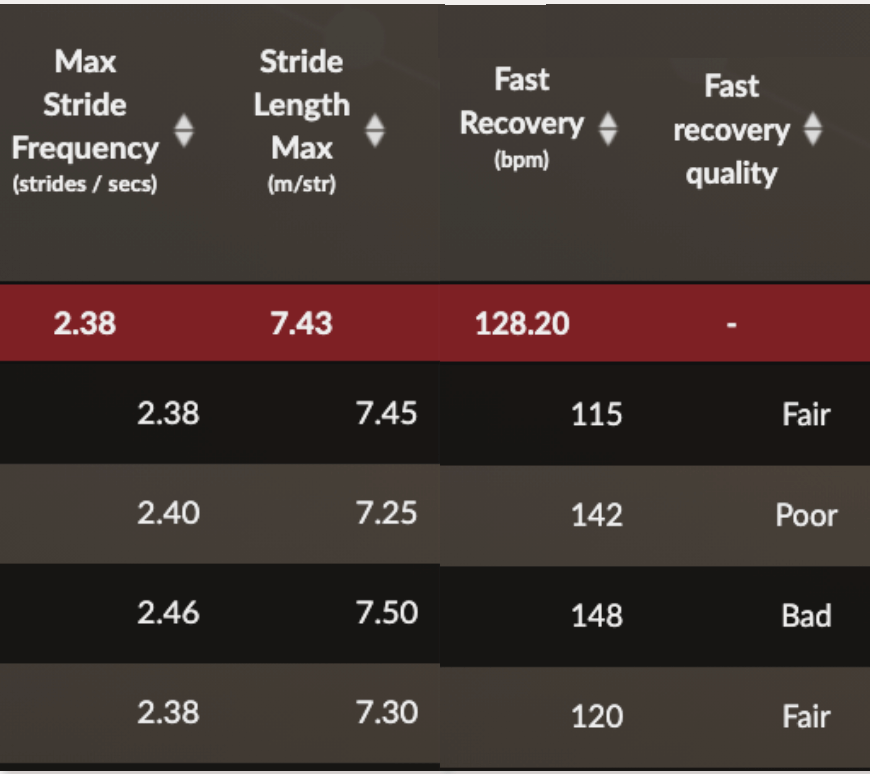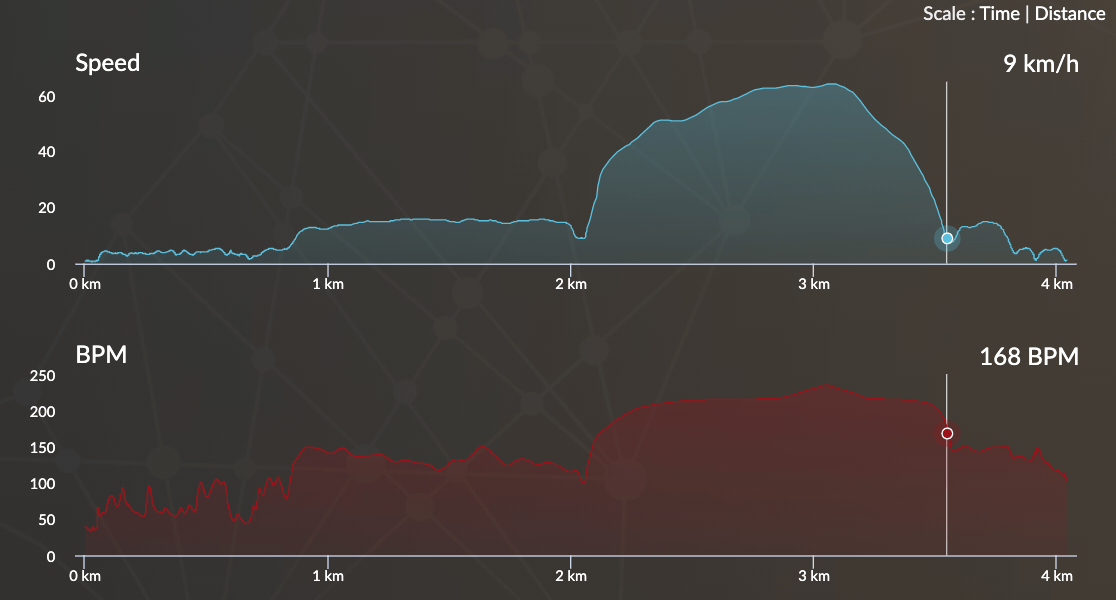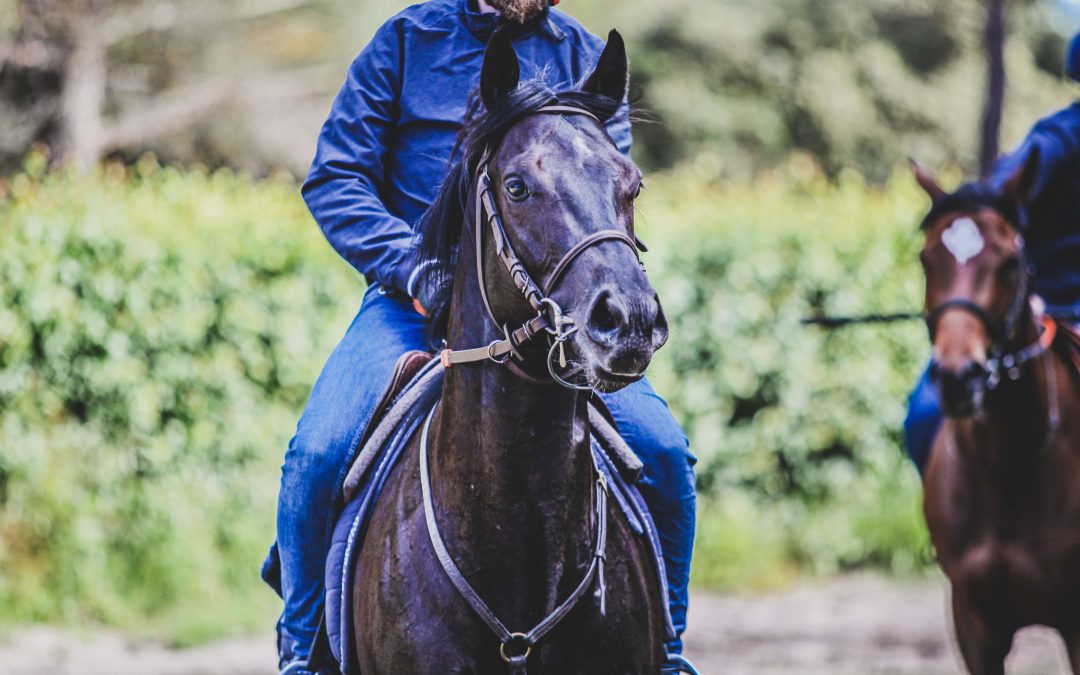Early detection pathologies in racehorses is a challenge for the horse racing industry. Indeed, in an era where well-being is becoming increasingly important, it is important to have the right tools to ensure the health of the athlete horses. Using a connected sensor is an excellent way to make horses talk: objective data collected during training can highlight a drop in fitness, poor recovery or locomotion irregularities.
Collecting a data historic
A connected sensor dedicated to racehorses allows collecting a data historic specific to each horse. This historic, made of reference data, provides for personalised monitoring and abnormalities detection. However, this data is only comparable if it has been collected during training sessions under similar conditions. Therefore, it is important to qualify for the training sessions: track, training, weather etc.
Here are some reference data to collect to detect pathologies:

Below are two concrete examples of pathology detection using data collected by our EQUIMETRE clients.
Detecting locomotion pathologies in racehorses
In the first case, we will analyse a 4-year-old mare who performed in Group 3 races. After a break in her training, her return was disappointing. She did not show the same qualities as before. During training for a future race, the mare’s team detected a shorter stride on the EQUIMETRE data. Recovery after exercise was also slower. To identify these anomalies, the team compared the data from this training with data from a training session where the mare had excellent fitness and physical condition: she was performing well in a race. With no cardio-respiratory concerns, the trainers suspected a tendon issue.

The training sessions are of the same intensity: the maximum speed recorded is identical. Therefore, they are comparable.



There is a recovery change correlated with a decrease in stride length. Indeed, there is a deterioration in recovery after exercise and at the end of training.
The veterinary team intervened and detected a problem with the suspensors. Once treated, the mare was monitored again during her canter to see if the problem persisted.



Outcome
A full recovery can be seen on the data: locomotion and recovery have returned to the mare’s baseline values. Once recovered, she finished second in a Listed on 20 March 2021.
Detecting respiratory pathologies in racehorses
Respiratory pathologies are difficult to detect without a veterinary examination and are difficult to anticipate. A connected sensor offers the possibility of objectifying the racehorse’s recovery and cardio. Indeed, in some situations, the data does not correlate with what is visible to the naked eye: just because a horse seems to have recovered well does not necessarily mean that the data is positive.
The example discussed in this article is that of a 2-year-old foal ready to race. A poor recovery was recorded in the training session before his first race. The trainers decided to run him anyway because the young male looked good. He was the favourite for his race but unfortunately finished last.
A veterinary examination was carried out following this result. A severe case of pharyngitis was diagnosed, explaining his poor performance and recovery from training.

The heart rate remains abnormally high after the end of the exercise, at about 168 BPM when the speed decreases. The training was very intense for the horse in question: his body has difficulty in recovering.
Thus, the data is a real help to the trainer. It can predict a possible drop in fitness or highlight an underlying problem as shown in the example above. This underperformance could have been avoided.
The role of data in pathologies
Data cannot replace the expertise and experience of a horse’s entourage, but their objective support provides a valuable complement. Trainers and vets know their horses and their observations are unique. The main goal is to support trainers in case of doubt, but also to confront feelings with tangible data.
The emergence of new technologies in the industry brings unprecedented precision to the racehorse’s training: their well-being and performance can only be improved.
Keywords: racehorses health, pathology detection, racehorse training, locomotion issues, respiratory issues, racehorse training, racehorse monitoring, pathologies in racehorses

